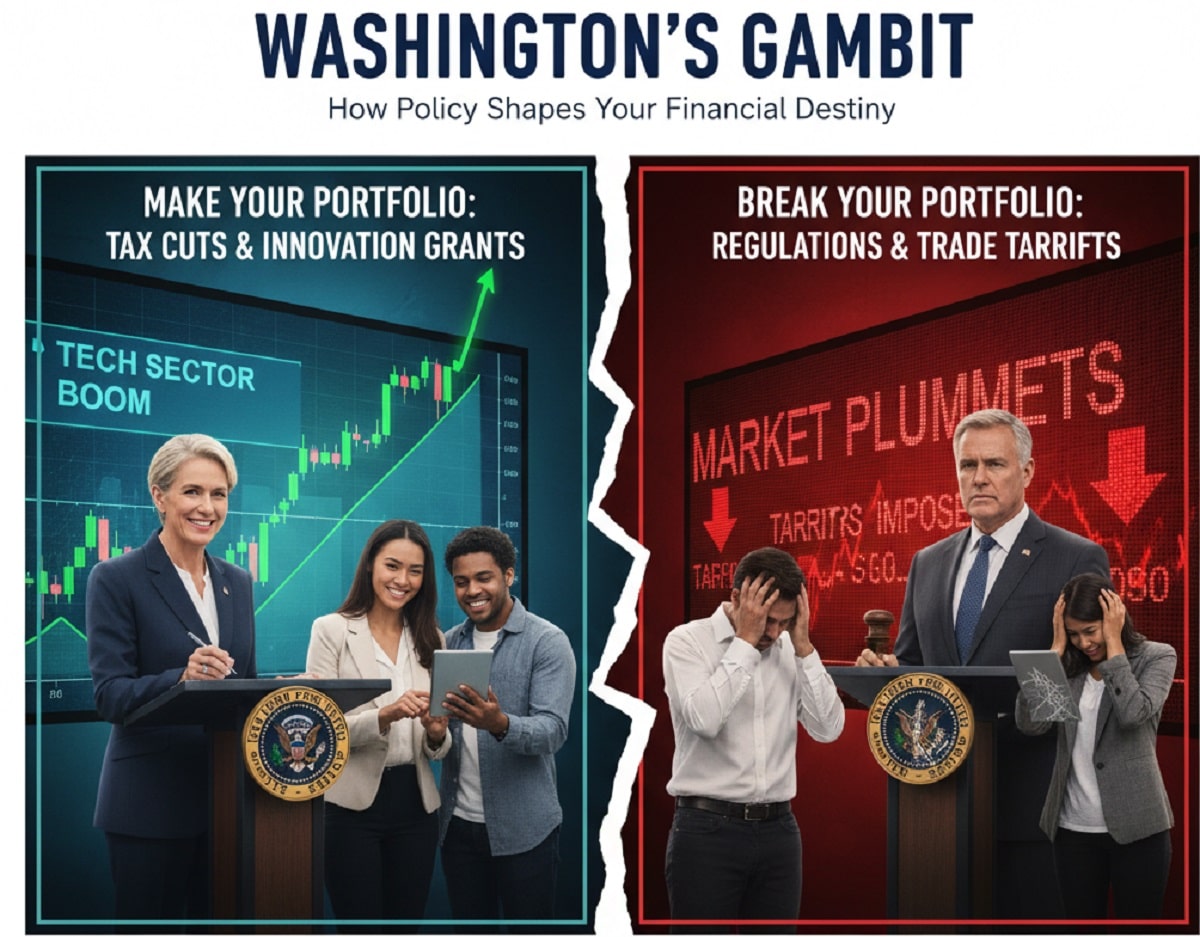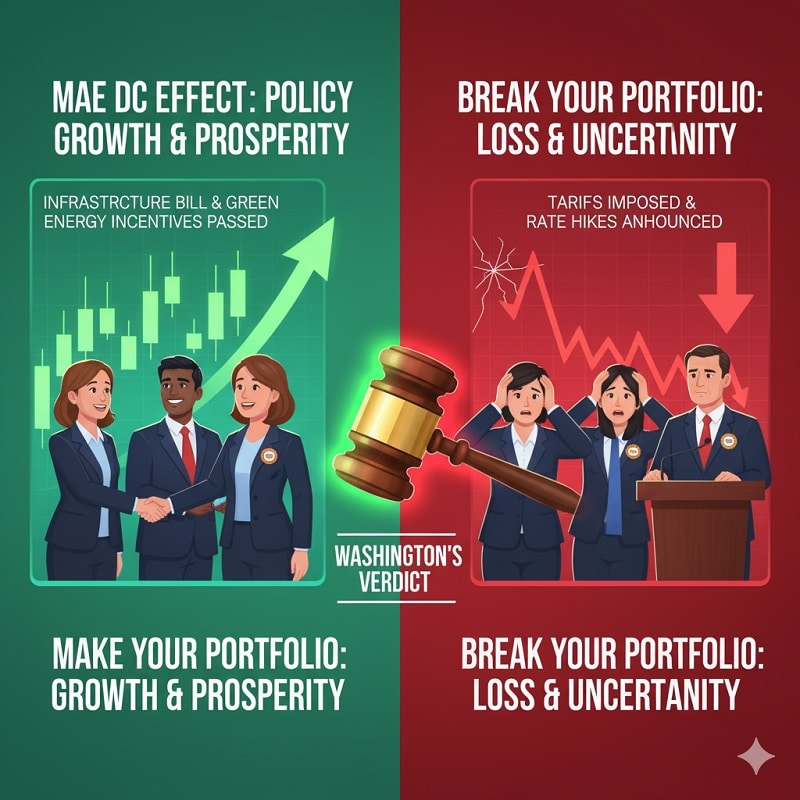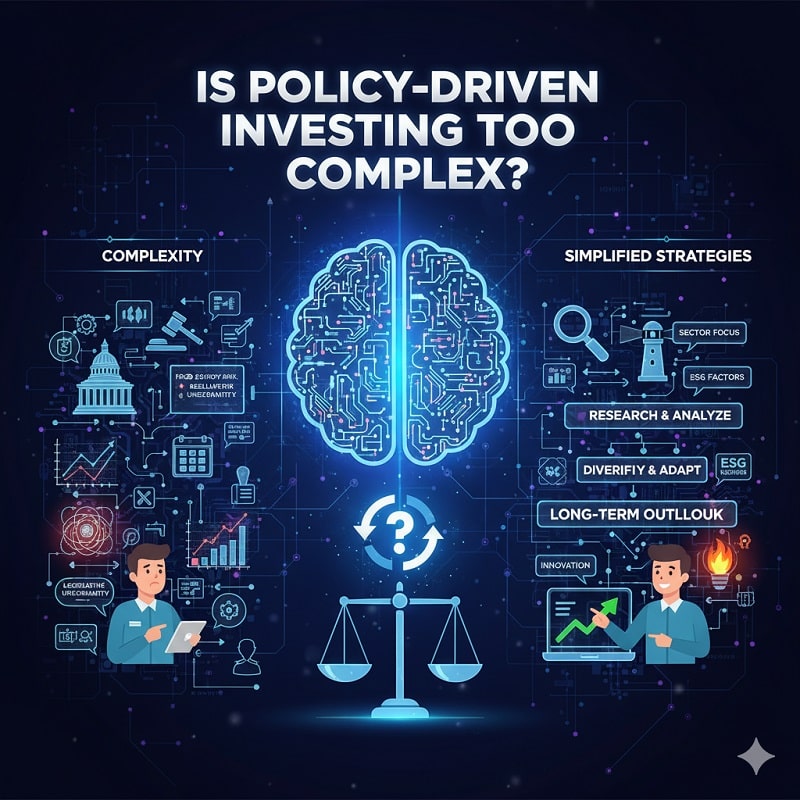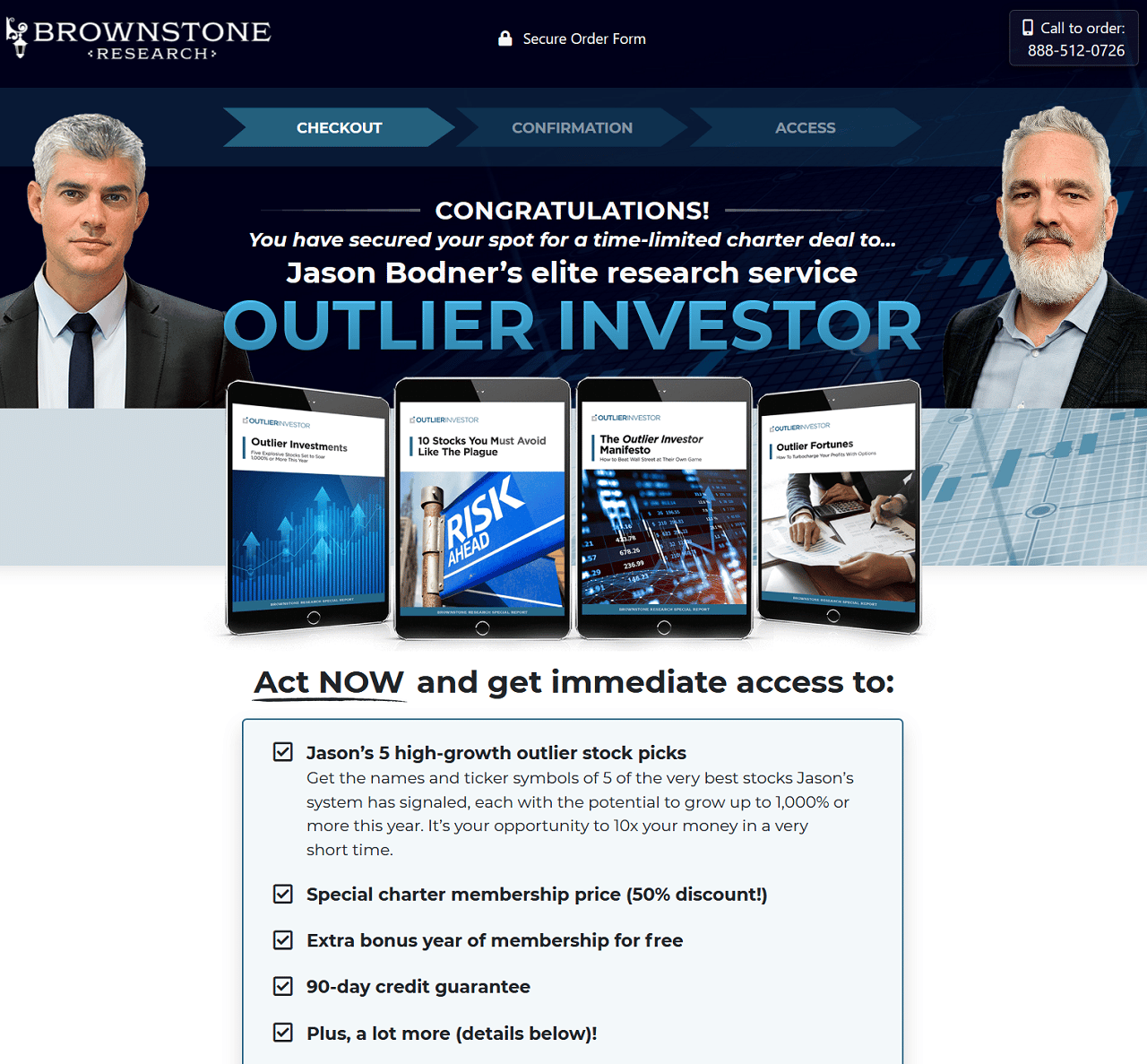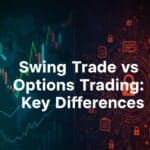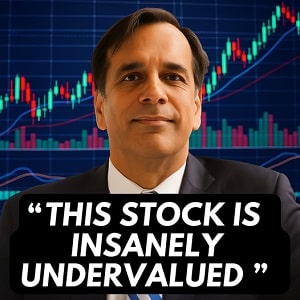You’ve probably felt it before: the moment a policy announcement hits the news, and suddenly your portfolio shifts — sometimes in a way you didn’t expect. One day a stock is climbing steadily; the next, it’s plunging because Washington decided to change course.
It’s not paranoia. Politics and policy are among the most powerful forces shaping financial markets. Interest rates, tax policy, infrastructure spending, regulatory changes — they can create windfalls for some investors and wipe out others.
As someone who has spent years following Washington policy shifts and their impact on markets, I’ve learned that ignoring the political environment is like sailing without a compass. You might get somewhere, but you won’t be able to navigate storms. And make no mistake — policy changes are storms investors can’t avoid.
I’ve tracked how moves in Congress and decisions at the Federal Reserve create ripple effects that cascade through sectors, industries, and asset classes. Over the past decade, we’ve seen policy moves create massive opportunities — and equally dramatic risks. For example:
-
The 2017 Tax Cuts and Jobs Act gave a boost to corporate earnings, sending many sectors higher — especially financials and industrials.
-
The 2020 CARES Act provided unprecedented stimulus during the pandemic, fueling a surge in certain tech stocks while leaving others behind.
-
Recent energy policy shifts have reshaped the renewable sector and the oil market in unexpected ways.
These examples highlight a simple truth: understanding the policy environment isn’t optional for investors — it’s essential. And that’s why strategies like those offered in Buck Sexton’s Money & Power can make the difference between staying ahead and being caught flat-footed. Buck Sexton’s service is designed for investors who want more than just market picks — it delivers context, insight, and analysis that tie policy developments directly to trading strategies.
So if you’re an investor or trader who wants to stay ahead, this article will walk you through how Washington’s moves shape portfolios, why it matters for your money today, and how you can position yourself to benefit — or protect yourself — before the market reacts.
By the end of this piece, you’ll see why policy-driven investing isn’t just a strategy for big institutional players — it’s a necessity for any serious investor. And you’ll have concrete examples to start applying to your portfolio immediately.
Before we dive deeper, let’s first highlight the key takeaways and questions that will guide this discussion, so you know exactly what you’ll get from this article.
Key Takeaways Q&A
Why should investors pay attention to Washington policy changes?
Because policy decisions are not abstract—they have a direct and measurable impact on markets. Every major policy change affects interest rates, corporate earnings, tax burdens, and investor sentiment. These shifts can influence entire sectors or even the broader economy. For example, the Federal Reserve’s stance on interest rates affects borrowing costs for businesses and consumers, which in turn impacts corporate profits and stock prices. Regulatory changes can reshape entire industries, while tax reforms change the profitability landscape for companies.
Ignoring these shifts is like sailing without checking the weather — you might reach your destination, but you won’t know when a storm is coming. Investors who understand policy moves can position themselves to capture upside opportunities and limit exposure to risks.
How do policy shifts actually impact portfolios?
Policy changes have a domino effect. They ripple through markets, affecting everything from individual stock prices to macroeconomic indicators. Take energy policy as an example: changes in subsidies, tariffs, or carbon regulations can significantly impact renewable energy companies, oil producers, and related sectors. Interest rate changes can shift money flows between stocks, bonds, and commodities. Trade policies can alter the competitive landscape for industries reliant on imports or exports.
Understanding these cause-and-effect relationships is essential for active investors. It’s not enough to just follow stock prices — you need to understand why they’re moving. That’s where services like Buck Sexton’s Money & Power come in. Buck’s research focuses on the intersection of policy and markets, offering analysis that goes beyond generic financial news.
Can policy-driven investing really outperform other approaches?
Yes — but only when approached systematically. Investors who base decisions solely on technical analysis or stock trends miss a critical dimension: policy context. Political and regulatory shifts can create trends that last months or even years. For example, the 2017 Tax Cuts and Jobs Act sparked a multi-year rally in corporate profits and stock valuations. Conversely, regulatory crackdowns can quickly undermine a sector’s outlook.
Policy-driven investing allows you to anticipate these shifts and act before the broader market reacts. It’s not about chasing headlines — it’s about using informed insight to position your portfolio strategically. That’s exactly what Money & Power provides: not just news, but actionable insight tied to a clear policy perspective.
How can individual investors act on this knowledge?
Investors can act by integrating policy analysis into their decision-making process. That means looking beyond earnings reports and technical charts to examine the political environment. Which sectors are likely to benefit from current policy trends? Which regulations could present obstacles? What’s the likely impact of upcoming legislation or Federal Reserve decisions?
For many investors, synthesizing this information is challenging — and that’s where an expert service like Buck Sexton’s Money & Power comes in. Buck distills complex policy moves into actionable investment strategies, allowing subscribers to respond quickly to changes without wading through endless news cycles.
What’s the biggest risk of ignoring policy?
Missed opportunity and unforeseen losses. Market moves often follow policy changes, but those changes rarely happen in a vacuum. For instance, a sudden regulatory adjustment in a high-growth sector can wipe out gains in weeks. The opposite is also true — certain policy shifts can create sustained growth opportunities that early movers can benefit from significantly. Without policy awareness, investors leave themselves vulnerable to both downside and missed upside.
How does Buck Sexton’s Money & Power help investors manage these risks?
Money & Power provides a structured approach to policy-driven investing. Buck’s analysis connects policy developments to their financial implications. That means readers don’t just get market predictions — they get a framework for understanding the “why” behind moves. The service includes timely alerts, detailed reports, and actionable recommendations designed to help investors protect their portfolios and seize opportunities before they become obvious to the broader market.
These takeaways make one thing clear: Washington policy moves are not abstract—they are market forces. And whether you’re a trader looking for quick opportunities or a long-term investor managing risk, understanding those forces is crucial.
That’s what we’ll explore in the main article: a deep dive into how policy moves shape markets, how to spot opportunities, and how Buck Sexton’s Money & Power equips you with the insight to act strategically.
Understanding the Impact of Washington Policy on Investment Portfolios
Investment isn’t just numbers on a screen. It’s a living, breathing interaction between businesses, the economy, and policy. Policy decisions in Washington influence everything — interest rates, trade agreements, taxes, regulation — and those ripple effects end up in your portfolio.
For many investors, policy can feel distant or abstract. But it’s anything but. Think of policy moves like currents in the ocean. You might not notice them when sailing, but they can drastically alter your course. Some currents push you forward; others can drag you off course entirely. Investors who track policy changes get the advantage of steering ahead of those currents instead of reacting when they hit.
This section will break down why policy matters, how it impacts markets, and what tools investors can use to incorporate it into their strategy.
Why Policy Matters for Investors
Policy affects markets because it shapes the environment in which businesses operate. That influence comes in several forms:
Fiscal Policy and Tax Changes
Tax policy changes impact corporate profits and consumer spending power. For instance, the 2017 Tax Cuts and Jobs Act lowered corporate tax rates, giving U.S. companies more capital to invest, leading to sustained earnings growth and driving markets higher. For investors, that meant sectors tied to capital-intensive growth — manufacturing, tech, energy — saw significant gains.
But not all policy changes produce winners. Increased capital gains taxes or stricter corporate taxes can pressure stock valuations, especially in sectors with narrow margins. This underscores why staying informed on policy changes matters: timing your moves around fiscal shifts can make a big difference in returns.
Regulatory Policy
Regulatory changes affect industries directly — think environmental rules for energy companies or healthcare regulations for pharmaceutical firms. These changes can create massive opportunities for some companies while squeezing others. For example, a push for renewable energy subsidies can benefit solar and wind power companies while creating headwinds for fossil fuels.
Investors who track regulatory trends can position themselves to ride the upswing of favorable changes or hedge against downturns.
Monetary Policy
Monetary policy — the Federal Reserve’s interest rate decisions — influences borrowing costs, liquidity, and inflation expectations. Low rates can spur borrowing and investment, boosting stocks and real estate. Rising rates can have the opposite effect. Even subtle shifts in Fed policy can trigger major swings in asset prices.
Understanding where monetary policy is heading allows investors to adjust portfolio allocations proactively.
Case Studies — Policy Moves That Shaped Markets
Nothing illustrates the importance of policy better than real-world examples. Let’s explore a few:
Trade Policy and Market Volatility
The trade tensions in 2018–2019 between the U.S. and China created substantial volatility in global markets. Tariffs affected everything from agricultural exports to manufacturing costs, shifting profitability for entire industries. Investors who tracked these policy developments could anticipate sector-specific impacts and adjust positions accordingly.
Infrastructure Spending
Government commitments to infrastructure projects have historically driven growth in construction, engineering, and materials sectors. The Infrastructure Investment and Jobs Act of 2021 opened opportunities for companies in transportation, materials, and energy. Investors who understood these moves early were positioned to capture gains before broader markets responded.
Interest Rate Changes
The Federal Reserve’s shifts in interest rate policy in 2022–2023 demonstrate how monetary policy affects portfolios. Rising rates hurt growth stocks and favored financials. Investors who monitored Fed guidance could reallocate to sectors poised to benefit, protecting returns and capitalizing on the shift.
These examples show that policy moves aren’t abstract — they create identifiable patterns. That’s the skill investors need to master.
How Buck Sexton’s Money & Power Helps Investors Decode Policy
For many investors, decoding policy is daunting. That’s where Buck Sexton’s Money & Power service comes in. Buck treats policy analysis as a core component of his strategy — connecting Washington moves directly to market implications.
Here’s how Money & Power helps:
-
Timely Policy Insights – Buck delivers clear, actionable summaries of major policy moves and explains what they mean for different asset classes.
-
Sector-Specific Guidance – Not all policies impact markets equally. Money & Power shows where opportunities are concentrated and where caution is needed.
-
Actionable Recommendations – Buck links analysis to specific investment actions, helping you take informed steps rather than reacting in hindsight.
For investors, this translates into actionable intelligence, not abstract commentary. It’s about moving from “What happened?” to “What should I do?”
Key Strategies for Policy-Driven Investing
Investors can integrate policy analysis into their portfolios with a few disciplined steps:
-
Stay Informed — Follow credible sources for policy developments.
-
Understand Sector Impacts — Different sectors respond differently to the same policy.
-
Adjust Positioning — Use insights to tilt your portfolio toward likely winners.
-
Hedge Risk — Anticipate potential downturns and adjust accordingly.
Policy-driven investing is proactive — and it rewards preparation. Services like Buck Sexton’s Money & Power give you the framework and alerts you need to make these adjustments effectively.
Objection Handling — Is Policy-Driven Investing Too Complex?
Some investors shy away from policy-driven investing because they view policy analysis as too complicated. But complexity isn’t the barrier — access to the right insights is. With the right research and analysis, policy-driven investing becomes an informed and manageable strategy.
That’s what Money & Power offers: concise, expert analysis designed to cut through noise. Buck translates complex legislative changes into actionable portfolio moves, allowing investors to act with confidence.
The Time to Act is Now
Policy moves happen fast. Markets adjust quickly, and the advantage belongs to those who act early. Waiting until everyone is talking about a policy change is often too late.
That’s why having a service like Buck Sexton’s Money & Power matters. Buck delivers the insights you need in real time, allowing you to position your portfolio ahead of the crowd.
Whether it’s a change in interest rates, a major trade deal, or new regulatory policy, staying informed gives you an edge. And that edge can make the difference between protecting your wealth and missing an opportunity.
Clear Next Steps for Investors
If you want to incorporate policy-driven investing into your portfolio:
-
Subscribe to Buck Sexton’s Money & Power for timely, actionable insights.
-
Review upcoming policy developments weekly.
-
Adjust allocations proactively based on informed analysis.
-
Use risk management strategies to protect your portfolio from unexpected shifts.
Policy moves will continue to influence markets — the question is whether you’ll be positioned to profit.
Conclusion
Investing is more than tracking stock prices or watching earnings reports. It’s about understanding the environment where those stocks exist. And in the modern market, that environment is shaped by policy. Washington policy moves — from tax changes to trade agreements to regulatory shifts — ripple through the economy and ultimately hit your portfolio.
Policy changes are not abstract. They’re forces that influence corporate profits, interest rates, sector performance, and investor sentiment. The challenge for investors is not just knowing that policy matters — it’s interpreting what those moves mean in real time and translating them into actionable portfolio decisions.
That’s where having an informed guide makes the difference. Buck Sexton’s Money & Power is built for exactly that purpose. It cuts through the noise and delivers clear, actionable policy analysis directly tied to investment opportunities. For investors and traders who want to stay ahead of market-moving shifts, this isn’t optional — it’s essential.
Why Acting on Policy Insights Matters Now
The pace of policy change has never been faster. Global tensions, domestic legislation, and technological transformation mean the policy environment is constantly evolving. Markets adjust quickly — and so do opportunities. Waiting until a policy move is fully priced in can mean losing the advantage entirely.
By the time a policy shift is headline news, much of its potential value has already been realized. The real advantage lies in understanding it early and positioning your portfolio before the broader market reacts. That’s the edge investors who follow Buck Sexton’s Money & Power gain.
Final Takeaways for Investors
Here’s what you should walk away with:
-
Washington policy moves matter — deeply and directly — to your portfolio’s performance.
-
Fiscal, regulatory, and monetary policies each influence markets differently.
-
Staying informed and positioning ahead of changes gives you an investing advantage.
-
Services like Buck Sexton’s Money & Power are designed to deliver timely, actionable insights so you can act with confidence.
Policy-driven investing is not just a strategy — it’s a mindset. And it’s one that can turn uncertainty into opportunity.
Your Next Move
If you want to make Washington policy work for your portfolio rather than against it, now is the time to act.
-
Subscribe to Buck Sexton’s Money & Power and gain access to policy analysis that translates directly into investment strategy.
-
Use his timely updates to position your portfolio ahead of shifts, not after.
-
Stay informed, stay ahead, and turn policy changes into an advantage.
Markets move fast. Policy moves faster. Don’t wait until it’s too late to adapt your portfolio.
Learn more about how Buck Sexton’s Money & Power can help you integrate policy insights into your investing strategy — visit the official service page today.

